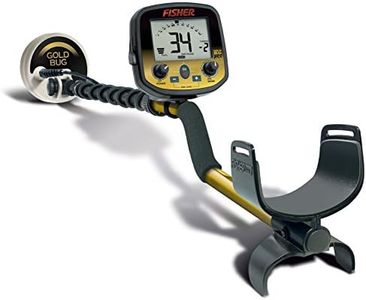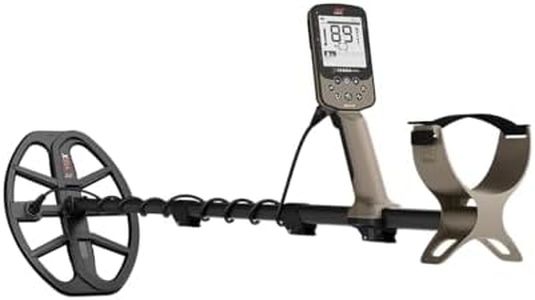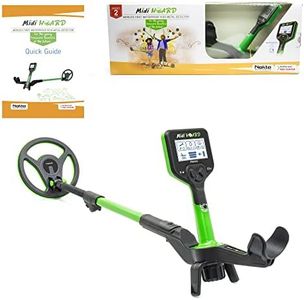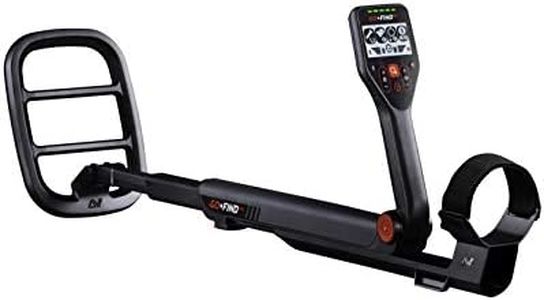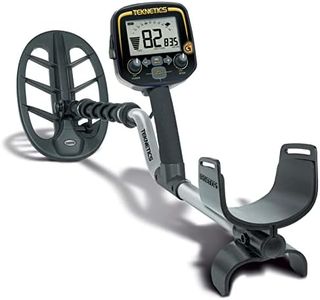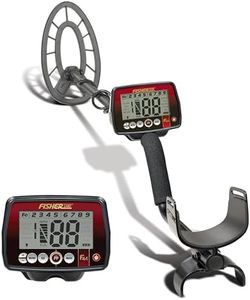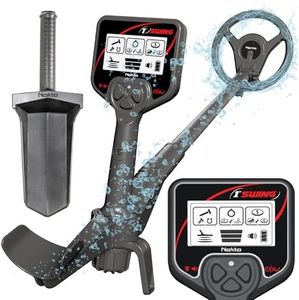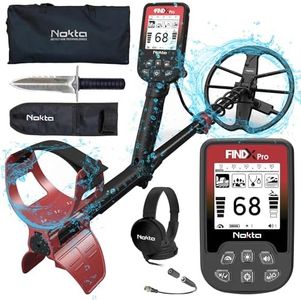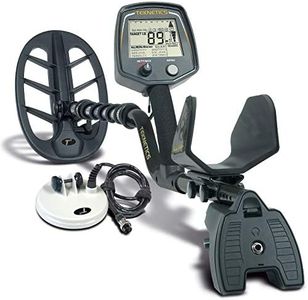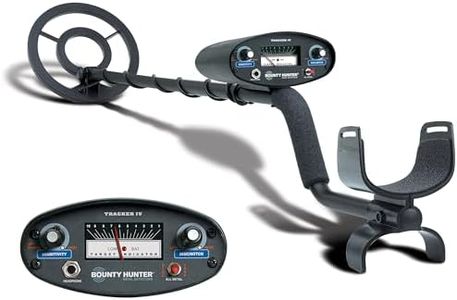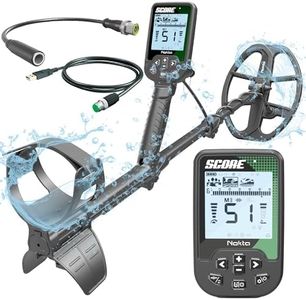We Use CookiesWe use cookies to enhance the security, performance,
functionality and for analytical and promotional activities. By continuing to browse this site you
are agreeing to our privacy policy
10 Best Metal Detectors For Beginners
From leading brands and best sellers available on the web.Buying Guide for the Best Metal Detectors For Beginners
Choosing your first metal detector can be exciting but also a bit confusing given the variety of models and features available. The right detector for a beginner is one that's simple to use, comfortable to carry, and versatile enough for different types of treasure hunting. To make a good choice, it's important to understand which features matter most for a beginner and what each specification means for your detecting experience.Operating FrequencyThe operating frequency of a metal detector refers to how many times per second the detector's signal is transmitted and received. This matters because low frequencies (usually 3-8 kHz) are better for finding deeper, larger objects like coins or relics, while higher frequencies (10-20 kHz and above) are more sensitive to small items like jewelry and small gold nuggets, but at shallower depths. For beginners, a detector with a mid-range frequency (5-15 kHz) offers a good balance, helping you find a variety of targets while keeping things straightforward.
DiscriminationDiscrimination is the detector's ability to distinguish different types of metals and ignore unwanted targets like nails or bottle caps. This feature is important because it saves time so that you're not always digging up trash. Basic detectors may have simple manual controls, while more advanced ones offer digital and automatic discrimination. Beginners should look for a user-friendly discrimination system, ideally with clear target ID and easy adjustment, so you can quickly learn what your detector is telling you.
Depth DetectionDepth detection tells you how deep underground the detector can sense objects. Most entry-level detectors can find coins and small relics to a depth of 6-8 inches, which is usually enough for new hobbyists. If you are mostly searching beaches, parks, or playgrounds, standard depth is sufficient. For deeper searches, more advanced knowledge and equipment are needed, but starting with moderate depth will cover most beginner needs without unnecessary complexity.
Ground BalanceGround balance refers to a detector's ability to ignore the minerals in the soil, which can otherwise create noise or false signals. Some detectors have preset (fixed) ground balance, some have automatic adjustment, and others allow you to manually tweak it. For most beginners, fixed or automatic ground balance is preferred since it requires less setup, allowing you to focus on learning the hobby instead of making constant adjustments. Manual ground balance is more useful in highly mineralized soils and as you gain experience.
Weight and ErgonomicsThe weight and design of a metal detector are important because you'll often be holding and swinging it for long periods. Heavier detectors can quickly become tiring, especially for children or people who prefer casual use. Lightweight detectors (typically under 3 pounds) are easier to manage and are ideal for beginners. Look for comfortable handles, adjustable shaft lengths, and balanced designs that reduce arm fatigue, helping you enjoy the hobby for longer without discomfort.
Water ResistanceWater resistance determines whether your metal detector can be used in wet environments, such as on beaches, shallow streams, or rainy weather. Some entry-level detectors are only splash-proof (safe in light rain), while others have waterproof coils, allowing the lower part to be submerged in water. For beginners, basic water resistance is usually enough, but if you plan to search near water or in rainy climates, look for at least a waterproof coil to protect your investment and expand your hunting options.
Ease of Use and ControlsHow simple it is to use your metal detector matters a lot when you’re learning. Beginner-friendly models have intuitive controls, clear displays, and simple setup processes. Complicated buttons and menus can be frustrating if you’re just starting out. Make sure the detector you choose has straightforward settings and clear feedback, so you can focus on finding treasure instead of wrestling with the device. Features like one-touch operation, clear target ID, and informative sound signals are helpful for those new to the hobby.
